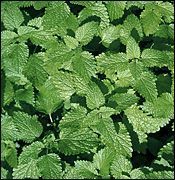Whether you accept it, avoid it or live somewhere in between, insurance coverage has become a defining issue for our profession. Patients increasingly expect to use their benefits, practitioners want to be compensated fairly for their time and expertise, and the system itself remains – at best – fragmented. The encouraging news is that coverage has expanded in meaningful ways. The challenging news is that reimbursement, across the board, remains inadequate.
Herbs & Botanicals
Mint (Bo He)
What is mint? What is it used for?
Mint is an herb belonging to the labiatae family, specifically mentha haplocalyx Briq. It consists of a squarish stem and elliptical, scaled leaves. Both the leaves and stem are covered with tiny white hairs. The plant has an aromatic odor and an acrid taste. Both the leaves and stem are used in herbal preparations, as is mint oil.
Mint oil contains dozens of chemicals, acids and compounds, including leucine, menthol and aspartic acid. Together, these substances are responsible for many of mint’s healing properties. Studies have shown that mint can inhibit bacteria such as staphylococcus aureus, staphylococcus albus and streptococcus, and viruses such as herpes simplex and vaccinia. Other research shows that it facilitates the flow of mucus in the trachea, and can improve the absorption rates of salicylic acid (the main ingredient in aspirin).
 In traditional Chinese medicine, mint is considered to have pungent, aromatic and cool properties. It is associated with the Lung and Liver meridians, and is used to expel wind heat, clear the head and eyes, clear up rashes, and remove liver qi stagnation. Taken orally, mint is used to treat diarrhea and painful menstruation, promote perspiration and dissipate body heat. It is also taken as a means of stimulating the nervous system. In addition, the German Commission E has approved the internal use of mint oil for a variety of conditions, including flatulence, gastrointestinal and gallbladder disorders, and catarrhs of the upper respiratory tract, and external use for myalgia and neuralgia.
In traditional Chinese medicine, mint is considered to have pungent, aromatic and cool properties. It is associated with the Lung and Liver meridians, and is used to expel wind heat, clear the head and eyes, clear up rashes, and remove liver qi stagnation. Taken orally, mint is used to treat diarrhea and painful menstruation, promote perspiration and dissipate body heat. It is also taken as a means of stimulating the nervous system. In addition, the German Commission E has approved the internal use of mint oil for a variety of conditions, including flatulence, gastrointestinal and gallbladder disorders, and catarrhs of the upper respiratory tract, and external use for myalgia and neuralgia.
How much mint should I take?
The typical dosage of mint is 1.5 to 6 grams, taken as a decoction. Mint is often used in conjunction with other herbs, such as lonicera, forsythia and arctium.
What forms of mint are available?
Mint oil is available at all types of health food stores and Asian markets. Some stores also sell free and dried mint leaves and stems, which are crushed and used as spices or herbal teas.
What can happen if I take too much mint? Are there any interactions I should be aware of? What precautions should I take?
Evidence suggests that people with sensitive digestive systems may suffer moderate stomach disorders by ingesting mint. In addition, some Chinese studies have shown that high doses of mint oil can have a deleterious effect on the female reproductive system by aborting early-stage pregnancies. Other studies have found that mint can increase the absorption rate of drugs such as salicylic acid and paracetamol, so extreme caution should be taken by people using these drugs in conjunction with mint. Because mint helps promote perspiration, it should not be taken by people who are already sweating profusely. As always, make sure to consult with a licensed health care provider before taking mint or any other herbal remedy or dietary supplement.
References
- Blumenthal M, Goldberg A, Brinckmann J (eds.) Herbal Medicine. Expanded Commission E Monographs. Austin, TX: Integrative Medicine Communications, 2000, pp. 264-265.
- Editorial Committee of Chinese Materia Medica. State Drug Administration of China. Chinese Materia Medica. Shangahi: Science and Technology Press, 1998.
- Leung AY, Foster S. Encyclopedia of Common Natural Ingredients Used in Food, Drugs and Cosmetics, 2nd ed. New York: John Wiley and Sons, 1996.
- Ni JG, et al. Journal of Clinical Application of Internal Medicine 1998;15(4):226.
- Yang SJ, et al. Journal of Chinese Materia Medica 1991;22(10):454-457.


